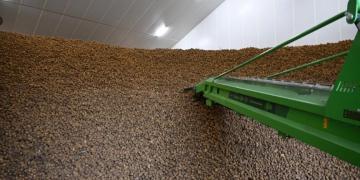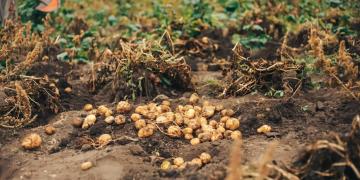International Potato Day: Why is it celebrated today?
International Potato Day, dedicated to the queen of tubers, is May 30th. A look at how much we still don’t know about it. Details.

The potato is a tuber widely cultivated and consumed throughout the world. Native to the Andean region of Peru , it has been a staple food for thousands of years, fundamental to the diet of many cultures. This May 30th marks the first time that International Potato Day is celebrated worldwide , a date promoted by the United Nations General Assembly .
The potato is one of the five most important crops in the world. It is grown in more than 150 countries and is commonly consumed by billions of people around the world.
There are more than 5,000 varieties of potatoes, each with distinctive characteristics in terms of shape, color, size, and flavor. Some common varieties include white, red, yellow, and purple potatoes. Each type has specific culinary uses; for example, some are ideal for boiling, others for frying, and others for baking.
It is important to mention that there are approximately 180 wild species related to the cultivated potato, which possess a wide range of desirable hereditary traits, such as adaptability to different environments and production systems, resistance to pests and diseases, and a high concentration of nutrients. Although many of these wild species are unfit for human consumption, they represent a valuable reserve of raw material that can be used to develop ever-improved potato varieties.
ORIGIN OF INTERNATIONAL POTATO DAY
In fact, this isn’t the first time the UN General Assembly has focused on potatoes to enhance their value. It declared 2008 the International Year of the Potato to raise awareness of the need to promote research and development for sustainable production in low- and middle-income countries.
International Potato Day was officially established by Project A/78L/L.16 of December 23, 2023, led and presented by Peru.
The Peruvian initiative has received support from a variety of nations, with lead co-sponsors including Argentina, Armenia, Austria, Belarus, Belgium, Bolivia, China, Colombia, Croatia, Cyprus, the Czech Republic, Ecuador, Slovakia, Slovenia, Spain, Estonia, Fiji, Finland, France, Georgia, and Guatemala.
The establishment of this date aims to recognize the importance of the potato as a staple food and its key role in the fight against hunger and poverty. It also seeks to highlight the cultural heritage associated with this tuber, especially in our country, where there is a great diversity of species and significant contributions have been made to its spread.
This International Potato Day aims to promote research, agricultural development, and sustainable production related to this crop. This recognizes its importance in terms of food security and as a source of income for millions of farmers worldwide.
THE EXTRAORDINARY JOURNEY OF THE POTATO
- Native to the Andes, the potato was known in the Inca civilization as the “flower of the ancient Inca civilization.”
- The potato, which arrived in Europe in the 16th century, contributed to the process of urbanization and drove the Industrial Revolution.
- In Qing Dynasty China, the potato was credited with saving lives by helping to stem famine.
- In times of conflict, such as World War II, the potato’s high yield and resilience provided food security.
- The Great Irish Famine of the 1840s is a clear example of how a lack of genetic diversity and farming systems can lead to disastrous results.
- Today, the potato stands as a beacon of food security and a pillar of sustainable agriculture: with more than 5,000 potato varieties, they offer a wealth of genetics to combat pests, diseases, and the impacts of climate change, guiding sustainable agricultural practices.
- Peru, as the main center of origin of the potato, is home to an impressive diversity of this tuber.
Fuente:




